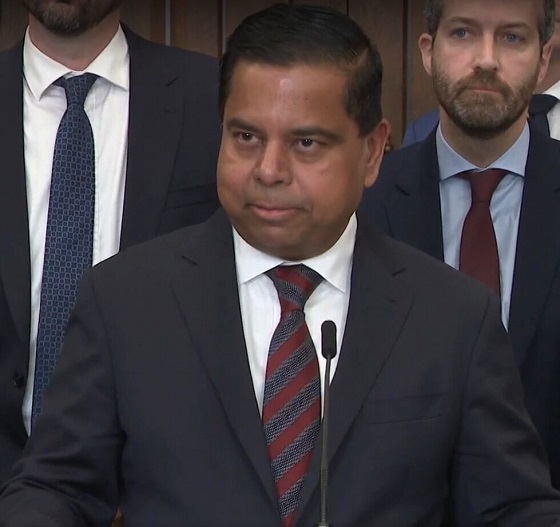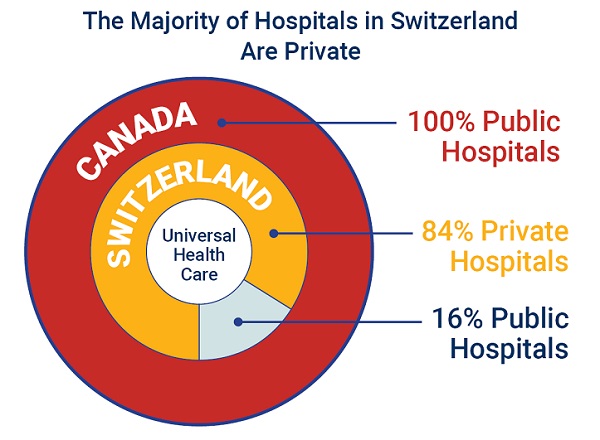Alberta
Alberta budget announces record high health spending including money for new and redeveloped hospitals

Alberta’s government is providing another year of record-high investment, with $24.5 billion in the Ministry of Health’s operating expense this year, an increase of 4.1 per cent from last year. This new funding will focus on addressing areas of priority in the Healthcare Action Plan to improve the health-care services Albertans expect and deserve. In addition, Alberta’s primary health-care system is being strengthened and modernized with a record investment of $243 million over three years.
Budget 2023 provides $3.1 billion in capital funding over three years to further build up Alberta’s valuable health-care infrastructure, an additional $529 million in capital maintenance and renewal for health facilities and a further $732 million in self-financed funding. The $3.1 billion includes funding for the redevelopment and expansion of the Red Deer Regional Hospital, increasing critical services and capacity in one of Alberta’s largest hospitals.
Additionally, $18 million over three years is for further planning for proposed health capital projects across the province, including the stand-alone Stollery Children’s Hospital in Edmonton, a north Calgary/Airdrie regional health centre, expansion of the Strathcona Community Hospital, and new or upgraded facilities in Bassano, Cardston and Whitecourt.
A total of $237 million over three years will go towards the Alberta Surgical Initiative Capital Program, with $120 million in new funding to expand and modernize operating rooms in 15 communities across the province and reduce wait times for surgeries.
The new Health Workforce Strategy will help get Albertans the care they need, when and where they need it. Budget 2023 includes $158 million in 2023-24 to retain and support, attract, grow, strengthen and evolve the health-care workforce, including physicians and nurses.
“Building a resilient and responsive health-care system that meets the needs of Albertans is essential to keeping our province healthy. This is why Budget 2023 includes another record-high health-care investment, so we can put the right health-care professionals, resources and services where they are needed most.”
Budget 2023 invests in emergency medical services (EMS) to improve ambulance response times. An increase of $196 million over three years will help hire more staff and implement recommendations from the Alberta EMS Provincial Advisory Committee. A new capital program will provide $15 million over three years to put more ambulances on the road.
As part of the initiative to improve primary health care, Alberta’s government is investing more than $2 billion in 2023-24. This includes $243 million over three years to strengthen the province’s primary care system, including implementing the recommendations from the three advisory panels of Modernizing Alberta’s Primary Health Care System (MAPS) established in fall 2022. These recommendations will inform the government’s immediate next steps and a path forward over the next five to 10 years.
“Investing in health care is not just a cost, it’s an investment in our future. By increasing critical health-care capacity, we can ensure that our health-care system is equipped to meet the needs of our citizens and provide the highest quality of care possible.”
“Over the next three years, Alberta’s government is investing $23 billion into public infrastructure through the 2023 Capital Plan. By building and revitalizing hospitals, schools, courthouses and other public facilities, we are investing in the critical infrastructure projects that Albertans need and help keep people working.”
Budget 2023 includes nearly $4.3 billion in combined operating support for community care, continuing care and home care programs, an increase of more than 15 per cent, or $570 million from the 2022-23 forecast. An investment of $1 billion over three years will support continuing care transformation that will shift care to the community, enhance workforce capacity, increase choice and innovation, and improve the quality of care within the sector. In addition, there is $310 million over three years for the Continuing Care Capital Program, which supports modernizing continuing care facilities, developing innovative small care homes, providing culturally appropriate care for Indigenous Peoples and building new spaces in priority communities having the greatest need.
Budget 2023 includes operating expense of $148 million in 2023-24 for the Ministry of Mental Health and Addiction. In addition, it supports Alberta Health Services with additional funding to reduce wait times for mental health and addiction services and address gaps in the system. Alberta spends more than $1 billion per year on mental health and addiction programs and services, excluding physician billings. Over the next three years, Alberta’s government will also invest $155 million in capital funding to continue building holistic, long-term recovery communities where Albertans will be able to access detox services, treatment medications, peer support, and help with skills and training.
“Alberta has emerged as a national leader in building out recovery-oriented systems of care for addiction and mental health. The historic investments included in Budget 2023 will help us further expand treatment and recovery services, enabling us to support more Albertans in their pursuit of recovery.”
Budget 2023 highlights
- $6.2 billion budgeted in 2023-24, increasing to more than $6.4 billion by 2025-26 for physician compensation and development programs.
- More than $250 million over four years (beginning in 2022-23) for recruitment and retention programs under the agreement with the Alberta Medical Association so more Albertans can access family doctors, and to provide more support to help physicians keep their clinics open and running.
- More than $2 billion per year for Drugs and Supplemental Health benefit programs. The Seniors Drug program budget is the largest component of this suite of programs, with $693 million budgeted in 2023-24, supporting more than 700,000 seniors.
- More than $2 billion in 2023-24 to support primary care in Alberta, including payments to family doctors.
- $125 million over three years as an initial investment, providing funding for early opportunities to improve primary care identified through the Modernizing Alberta’s Primary Health Care Systems (MAPS) initiative.
Budget 2023 secures Alberta’s bright future by transforming the health-care system to meet people’s needs, supporting Albertans with the high cost of living, keeping our communities safe and driving the economy with more jobs, quality education and continued diversification.
Alberta
Alberta announces citizens will have to pay for their COVID shots

From LifeSite News
The government said that it has decided to stop ‘waste’ by not making the shots free starting this fall.
Beginning this fall, COVID shots in the province will have to be pre-ordered at the full price, about $110, to receive them. (This will roll out in four ‘phases’. In the first phases COVID shots will still be free for those with pre-existing medical conditions, people on social programs, and seniors.)
The UCP government in a press release late last week noted due to new “federal COVID-19 vaccine procurement” rules, which place provinces and territories as being responsible for purchasing the jabs for residents, it has decided to stop “waste” by not making the jab free anymore.
“Now that Alberta’s government is responsible for procuring vaccines, it’s important to better determine how many vaccines are needed to support efforts to minimize waste and control costs,” the government stated.
“This new approach will ensure Alberta’s government is able to better determine its overall COVID-19 vaccine needs in the coming years, preventing significant waste.”
The New Democratic Party (NDP) took issue with the move to stop giving out the COVID shots for free, claiming it was “cruel” and would place a “financial burden” on people wanting the shots.
NDP health critic Sarah Hoffman claimed the move by the UCP is health “privatization” and the government should promote the abortion-tainted shots instead.
The UCP said that in 2023-2024, about 54 percent of the COVID shots were wasted, with Health Minister Adriana LaGrange saying, “In previous years, we’ve seen significant vaccine wastage.”
“By shifting to a targeted approach and introducing pre-ordering, we aim to better align supply with demand – ensuring we remain fiscally responsible while continuing to protect those at highest risk,” she said.
The UCP government said that the COVID shots for the fall will be rolled out in four phases, with those deemed “high risk” getting it for free until then. However, residents who want the shots this fall “will be required to pay the full cost of the vaccine, the government says.”
The jabs will only be available through public health clinics, with pharmacies no longer giving them out.
The UCP also noted that is change in policy comes as a result of the Federal Drug Administration in the United States recommending the jabs be stopped for young children and pregnant women.
The opposite happened in Canada, with the nation’s National Advisory Committee on Immunization (NACI) continuing to say that pregnant women should still regularly get COVID shots as part of their regular vaccine schedule.
The change in COVID jab policy is no surprise given Smith’s opposition to mandatory shots.
As reported by LifeSiteNews, early this year, Smith’s UCP government said it would consider halting COVID vaccines for healthy children.
Smith’s reasoning was in response to the Alberta COVID-19 Pandemic Data Review Task Force’s “COVID Pandemic Response” 269-page final report. The report was commissioned by Smith last year, giving the task force a sweeping mandate to investigate her predecessor’s COVID-era mandates and policies.
The task force’s final report recommended halting “the use of COVID-19 vaccines without full disclosure of their potential risks” as well as outright ending their use “for healthy children and teenagers as other jurisdictions have done,” mentioning countries like “Denmark, Sweden, Norway, Finland, and the U.K.”
The mRNA shots have also been linked to a multitude of negative and often severe side effects in children and all have connections to cell lines derived from aborted babies.
Many Canadian doctors who spoke out against COVID mandates and the experimental mRNA injections were censured by their medical boards.
LifeSiteNews has published an extensive amount of research on the dangers of the experimental COVID mRNA jabs that include heart damage and blood clots.
Alberta
Alberta’s grand bargain with Canada includes a new pipeline to Prince Rupert

From Resource Now
Alberta renews call for West Coast oil pipeline amid shifting federal, geopolitical dynamics.
Just six months ago, talk of resurrecting some version of the Northern Gateway pipeline would have been unthinkable. But with the election of Donald Trump in the U.S. and Mark Carney in Canada, it’s now thinkable.
In fact, Alberta Premier Danielle Smith seems to be making Northern Gateway 2.0 a top priority and a condition for Alberta staying within the Canadian confederation and supporting Mark Carney’s vision of making Canada an Energy superpower. Thanks to Donald Trump threatening Canadian sovereignty and its economy, there has been a noticeable zeitgeist shift in Canada. There is growing support for the idea of leveraging Canada’s natural resources and diversifying export markets to make it less vulnerable to an unpredictable southern neighbour.
“I think the world has changed dramatically since Donald Trump got elected in November,” Smith said at a keynote address Wednesday at the Global Energy Show Canada in Calgary. “I think that’s changed the national conversation.” Smith said she has been encouraged by the tack Carney has taken since being elected Prime Minister, and hopes to see real action from Ottawa in the coming months to address what Smith said is serious encumbrances to Alberta’s oil sector, including Bill C-69, an oil and gas emissions cap and a West Coast tanker oil ban. “I’m going to give him some time to work with us and I’m going to be optimistic,” Smith said. Removing the West Coast moratorium on oil tankers would be the first step needed to building a new oil pipeline line from Alberta to Prince Rupert. “We cannot build a pipeline to the west coast if there is a tanker ban,” Smith said. The next step would be getting First Nations on board. “Indigenous peoples have been shut out of the energy economy for generations, and we are now putting them at the heart of it,” Smith said.
Alberta currently produces about 4.3 million barrels of oil per day. Had the Northern Gateway, Keystone XL and Energy East pipelines been built, Alberta could now be producing and exporting an additional 2.5 million barrels of oil per day. The original Northern Gateway Pipeline — killed outright by the Justin Trudeau government — would have terminated in Kitimat. Smith is now talking about a pipeline that would terminate in Prince Rupert. This may obviate some of the concerns that Kitimat posed with oil tankers negotiating Douglas Channel, and their potential impacts on the marine environment.
One of the biggest hurdles to a pipeline to Prince Rupert may be B.C. Premier David Eby. The B.C. NDP government has a history of opposing oil pipelines with tooth and nail. Asked in a fireside chat by Peter Mansbridge how she would get around the B.C. problem, Smith confidently said: “I’ll convince David Eby.”
“I’m sensitive to the issues that were raised before,” she added. One of those concerns was emissions. But the Alberta government and oil industry has struck a grand bargain with Ottawa: pipelines for emissions abatement through carbon capture and storage.
The industry and government propose multi-billion investments in CCUS. The Pathways Alliance project alone represents an investment of $10 to $20 billion. Smith noted that there is no economic value in pumping CO2 underground. It only becomes economically viable if the tradeoff is greater production and export capacity for Alberta oil. “If you couple it with a million-barrel-per-day pipeline, well that allows you $20 billion worth of revenue year after year,” she said. “All of a sudden a $20 billion cost to have to decarbonize, it looks a lot more attractive when you have a new source of revenue.” When asked about the Prince Rupert pipeline proposal, Eby has responded that there is currently no proponent, and that it is therefore a bridge to cross when there is actually a proposal. “I think what I’ve heard Premier Eby say is that there is no project and no proponent,” Smith said. “Well, that’s my job. There will be soon. “We’re working very hard on being able to get industry players to realize this time may be different.” “We’re working on getting a proponent and route.”
At a number of sessions during the conference, Mansbridge has repeatedly asked speakers about the Alberta secession movement, and whether it might scare off investment capital. Alberta has been using the threat of secession as a threat if Ottawa does not address some of the province’s long-standing grievances. Smith said she hopes Carney takes it seriously. “I hope the prime minister doesn’t want to test it,” Smith said during a scrum with reporters. “I take it seriously. I have never seen separatist sentiment be as high as it is now. “I’ve also seen it dissipate when Ottawa addresses the concerns Alberta has.” She added that, if Carney wants a true nation-building project to fast-track, she can’t think of a better one than a new West Coast pipeline. “I can’t imagine that there will be another project on the national list that will generate as much revenue, as much GDP, as many high paying jobs as a bitumen pipeline to the coast.”
-

 Alberta1 day ago
Alberta1 day agoAlberta’s grand bargain with Canada includes a new pipeline to Prince Rupert
-

 Business1 day ago
Business1 day agoCarney’s European pivot could quietly reshape Canada’s sovereignty
-

 Bruce Dowbiggin11 hours ago
Bruce Dowbiggin11 hours agoWOKE NBA Stars Seems Natural For CDN Advertisers. Why Won’t They Bite?
-

 Crime2 days ago
Crime2 days agoManhunt on for suspect in shooting deaths of Minnesota House speaker, husband
-

 Energy11 hours ago
Energy11 hours agoCould the G7 Summit in Alberta be a historic moment for Canadian energy?
-

 Crime11 hours ago
Crime11 hours agoMinnesota shooter arrested after 48-hour manhunt
-

 conflict4 hours ago
conflict4 hours agoIsrael bombs Iranian state TV while live on air
-

 Aristotle Foundation8 hours ago
Aristotle Foundation8 hours agoThe Canadian Medical Association’s inexplicable stance on pediatric gender medicine



